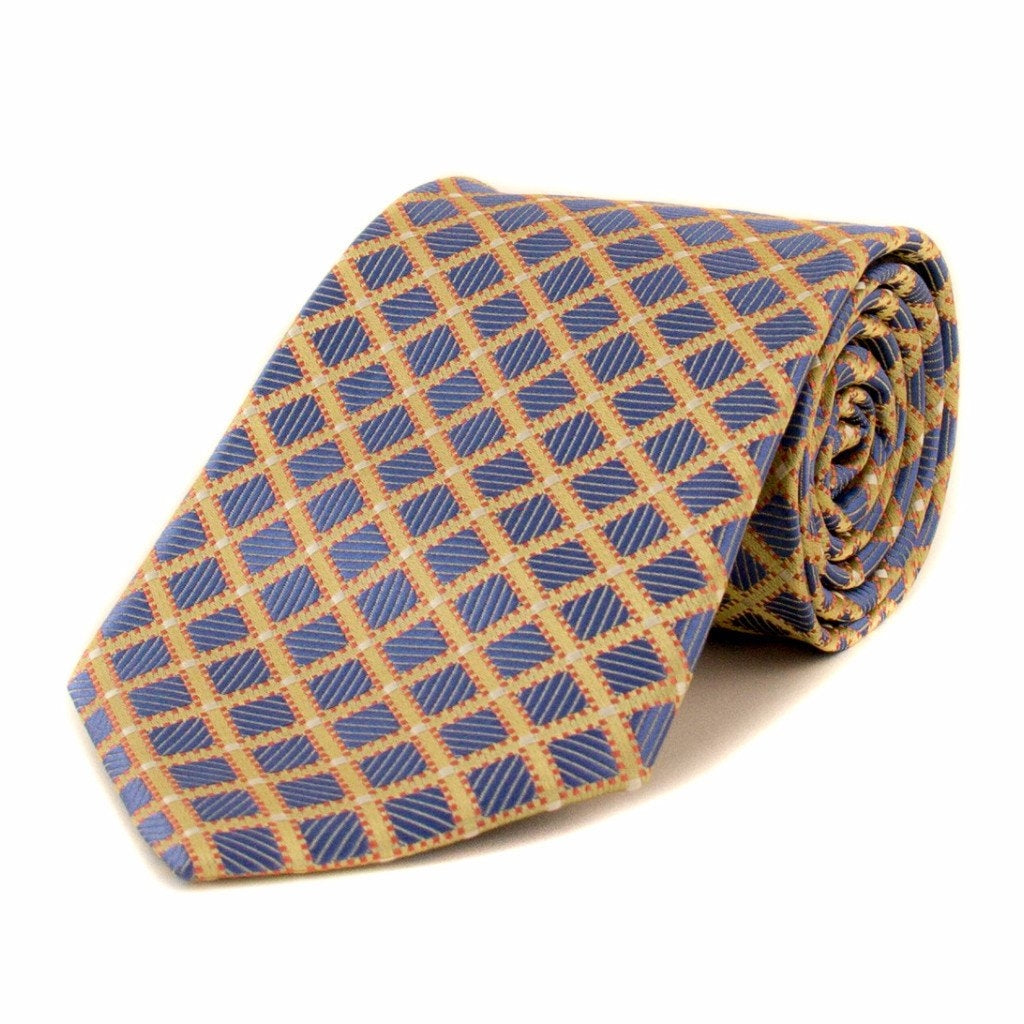HISTORY
OF
NECKWEAR
The Classic Necktie...
traces its roots back to Europe, dating centuries. There is a long history of neckwear worn by soldiers (Roman), whether as part of a uniform or as a symbol of belonging to a particular group. Some form of neckwear other than the outdoor scarf can be traced back intermittently through many centuries.
The modern necktie can be traced back to the Thirty Years War (1618-1648) when Croatia mercenaries from the Croatian Military Frontier in French service; wearing their traditional small, knotted neckerchiefs, aroused interest of the Parisians. Due to the slight difference between the Croatian word for Croats, Hrvati, and the French word, Croates, the garment gained the name ‘cravat’. The boy king-Louis XIV began wearing a lace cravat about 1646, when he was seven, and set the fashion for French nobility.
This new article of clothing started a fashion craze in Europe, both men and women wore pieces of fabric around their necks. From its introduction by the French King, men wore lace cravats that took a large amount of time and effort to arrange. These cravats were often tied in place by cravat strings, arranged neatly and tied in a bow.
Coming forward to more recent times, post First World War, hand-painted ties became an acceptable form of decoration in the United States. The widths of some of these ties went up to as high as 4.5 inches (modern day ties, excluding the skinny tie, range from 3.25 inches to 3.75 inches on the wider end)! These loud, flamboyant ties sold very well throughout the 1950’s.
Video By Chloe Chapin
Regimental stripes, which are striped ties of varying colors, originally represented membership in British military regiments. The word is derived from the Latin regimen, a rule or system of order and refers to military organization. In Britain, regimental stripes have been continuously used in designs at least since the 1920’s.
Some reports allude to British schools, colleges, universities and regimental ties having dated back to the 1880’s. In commonwealth countries, necktie stripes run from the left shoulder down to the right side. Some say that this choice was made because the stripe runs down from a person’s heart to their right (sword) hand. It is also believe that the stripes ran in the same direction as the rifles that were strapped over British shoulders ran In Commonwealth nations, normally only people affiliated with a regiment or university (or university, school or organization) will wear a necktie affiliated with that regiment (or university, college, school or organization).
When Brooks Brothers introduced similar striped ties in the United States around the beginning of the 20th century, they had their stripes run from the right shoulder to the left side, in part to distinguish them from British regimental (and organizational, school and university) striped neckties.
THE KNIT TIE
Vintage Knit Tie
This is a style of tie that originated in the 1920’s and was typically made of wool and worn by the working class. However, It began to gain popularity in the fashion world throughout the 60’s and 70’s and it started to be made in other, more civilized fabrics, like silk during this time. The tie is classified and a Formal / Casual Tie because it can be worn in the most formal settings but also in the most casual. It is used best for dressing down a formal outfit or to class up and casual outfit. It’s perfect for if you are not sure if you are going to a more formal event or if it is more relaxed. Wearing a knit tie will ensure you have the right amount of style points at any venue. It is best to wear with a smaller knot like a Four-In-Hand or a Single Windsor. This tie is also meant to be rolled up for storage instead of hung.
ASCOTS
Classic Ascot
The Ascot is originally descendent of the Cravat and was first worn at the turn of the 18th century. The term "Ascot" is originally from gentlemen who attended the Royal Ascot Race in England and wore a "day" cravat which was looser and lighter in nature. This piece of clothing went from something only royalty would wear into the more mainstream fashion culture as it was worn through the 20th century. The Ascot has gone in and out of popularity throughout the years but it has always been a staple for those looking to stand out from the rest and push their own style boundaries. It is typically a daytime piece and goes well with a jacket at a casual event.
- Trending Neckwear -
















